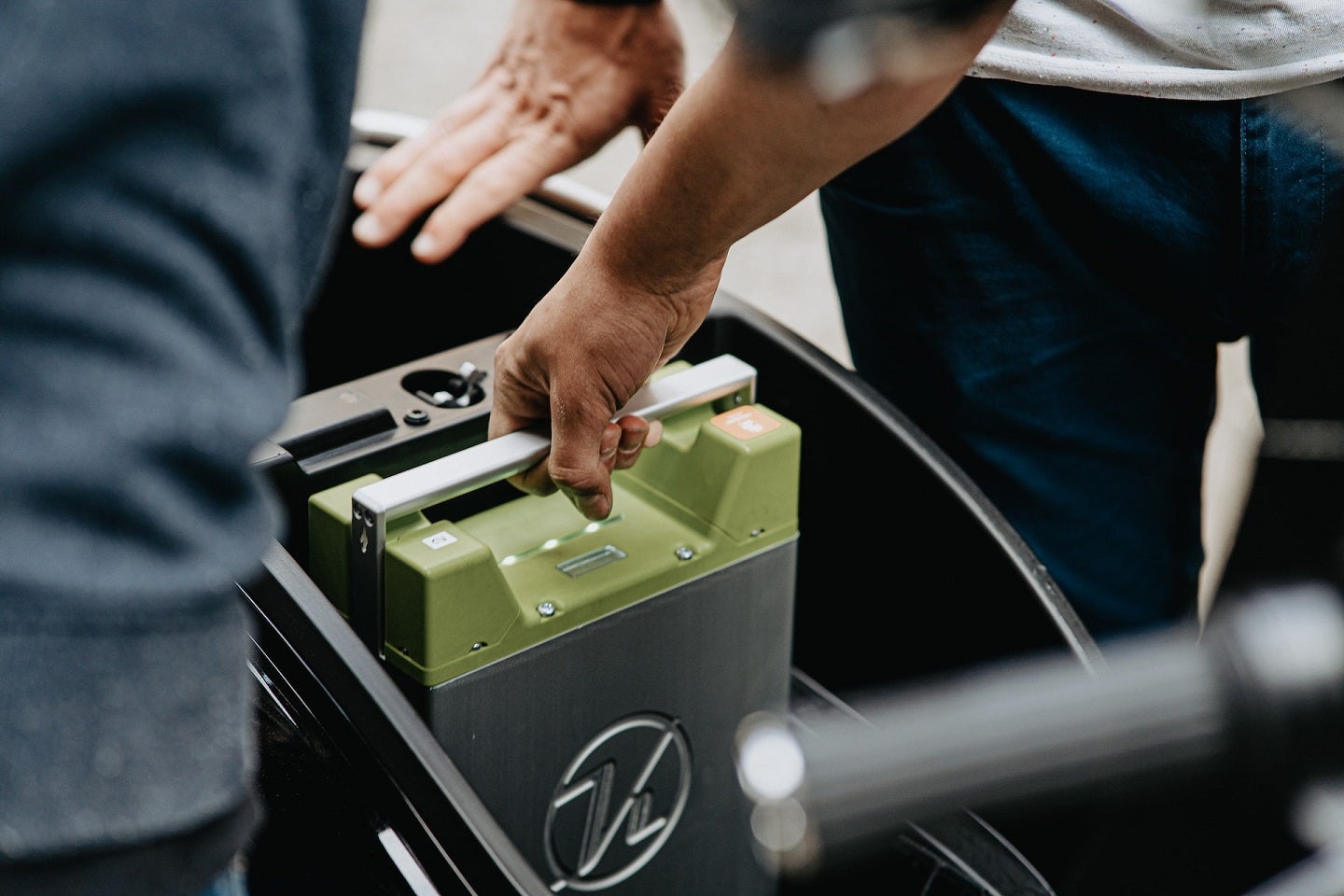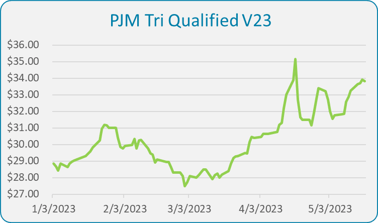A Sad Story about Budget Rentals and a Tesla Model 3
By Geoffrey Cann

I had an occasion to rent a car for the first time since the pandemic, for a few days out of Halifax, and visited the usual suspects to see what was on offer. Interestingly, Budget was making a vague commitment for the availability of a Tesla Model 3 vehicle (or similar, whatever that means) at a considerable premium, and since I view rentals as a kind of extended test drive opportunity, I rationalised the higher cost, and booked the rental. In my confidence, I paid for it all in advance, which turned out to be a minor error in judgement. Little did I know just how miserable a time I had purchased.
The Desk Experience
The first small alarm bell goes off when the agent casually mentions that renting a Tesla carries a few additional terms, which are only available to read on his terminal, spanning three screens of very grainy print (Budget hasn’t yet discovered the miracle of LED screen technology). It’s probably an important environmental step forward to eliminate the printed contract, saving some wood pulp, but expecting customers in a lengthy queue to carefully read long contracts in this way doesn’t seem like a good trade-off.
For your benefit, if you ever do sign an EV rental contract, be aware that you are signing up for towing charges to get a dead battery car back to where you rented it, a recharge levy if the battery is below 70%, no guarantees of battery performance (a gutsy move on the part of the renter), and unspecified incremental charges for the use of Tesla charging stations.
The agent instructs me to conduct a careful vehicle walk-around and to report back any found damages, which I do (a few stone chips). The tour complete, he hands me what looks like a credit card in a rigid clear plastic case, and, as is customary, suggests that I “please enjoy the car”.
Starting the Car
The car detects my presence as soon as I open the door, but where to put the card? There is no slot, no markings, no obvious reader. Like a good millennial (and I’m not a good millennial), I swiftly consult the Oracle on all things mysterious (YouTube) for some quick video instructions. Turns out you place the card on an unmarked spot on the center console, press the brake and poof, it’s ready to go.
The only adjustment I am able to quickly sort out is the seat position because the usual adjustment knobs are on the seat itself whereas everything else is through the big dashboard tablet screen. This boost in self confidence is a complete misdirect, as nothing else in the car works like any other car I have ever been in.
First Moves
I set out for my hotel, which according to my research is just off the airport property, and promptly miss the exit because I don’t quite grasp how to work the electric map on the console. You can pinch the map and find your location, but a few seconds later, the map ricochets back to the factory setting. One second you know where you are, the next you’re lost.
I’m now swiftly approaching a tee-junction — Halifax to the left ,Truro to the right. A snap decision later, and I’m heading off course down the highway and praying for a swift u-turn so I can head back to the airport. The map is clearly useless at this stage, so I unsafely grab my iphone and ask Siri to bail me out of this mess.
30 minutes later I finally get to the hotel (sadly, just steps away from the airport terminal), and spend more time on YouTube trying to find the button to turn the car off. A video reveals it’s on the Safety screen, and way at the bottom. This seems normal — the delete key is always at the bottom. It must be some safety feature that people in California consider helpful, to keep you from turning off the car while driving. I end the day with a little more time in the hotel researching and failing to figure out how to work the map, which later turns out to be the least of many bizarre inconveniences.
Setting Out
Next day I open the door, and immediately notice that the seat position I had carefully set up the previous day was reset to accommodate what I could only describe as an NFL lineman who has let himself go.
I sit in the parking lot, beg YouTube for more help, petition Google for a manual, and finally find a Tesla webpage. Turns out the screen to change the mirrors and adjust the steering wheel is right at the top of the menu. That makes sense, since these settings reset to factory every time you get out of the car and need to be easy to find. At last I get them set up, but now the seat is scorching hot and if the steering wheel gets any warmer, it’s going to melt. Back to the YouTube and the menus to find the heat controls, and those fires are put to bed. Finally I can set out.
The good news is that the car is very quiet, exceptionally stable and very sure on the road, due no doubt to the absence of an engine and the presence of an even heavier battery. And after a few minutes, it is time to summon some music. I find the button and encouragingly up pop lots of colorful options. I press radio. Nothing happens. How about the Spotify button? Nothing. Apple CarPlay? Nothing. Streaming? Nothing. Podcast? Nothing. This is odd. Rental cars have had working radios since the 1960s. I must be doing something wrong—perhaps amusements are buried somewhere under safety or accessibility.
And I forget again to look up cruise control. I am going to be on the highway for 400 kilometers (250 miles), without a break, and to maintain that constant accelerator pressure is going to be a strain.
Can’t Pass Big Truck
As is often the case on big inter-state highways, you eventually come up on the tail of some big truck and you wish to pass.
A message on the screen says that the speed on the car is limited to 113 km per hour (a bit over 60). Since the highway speed limit is 110, technically you’re breaking the law at 113, so obviously this is some new Budget-imposed control to make sure that its cars are not tagged for speeding on the highways. Speed governors are common in industry, so it’s logical to see them extended to rentals—I can imagine some drivers refusing to pay some speeding tickets that involve cameras. Then again, what stops someone from speeding in a 50km zone?
Have you ever driven in Atlantic Canada? The speed limit is at best a rough guideline. I reconcile that I am relegated to the slow lane for the whole of the now tedious journey.
Electrons Running Low
By lucky fortune, I had taken an Uber to Vancouver airport earlier in the week, and the Uber was a Tesla Model 3 similar to my eventual rental, so I quizzed the driver on how to recharge it. Dead easy, he said. Press this button on the screen and the car navigates you to the nearest charger.
But on my car, the map isn’t working and there’s no navigation. There is a charging option on the menu, but there is no obvious button to summon the directions as the Uber driver illustrated. Either Budget and Tesla had switched off this feature for some unknown safety reason, or I’m made of stupid. And it is now clear that I need to carefully research charger locations off-line on my phone, figure out if they’re working, and navigate to them independently.
Eventually I make my way to a charger park just off the highway, after a few anxious moments that I am making yet another wrong turn, and finally hook up the car. At last, something that actually works exactly as expected. And of course, it involves someone’s hand in my pocket extracting cash for electrons.
Before resuming the journey I again reset the seat, adjust the mirrors, move the steering wheel back, turn off the seat and steering wheel heaters.
Hacking the Map
Unsurprisingly, I eventually need to stop for a nature break, and I decide to look for a coffee shop. A Starbucks logo appears on the console map, but the exit is complicated by some construction, and frankly taking eyes off the road to pinch maps, look for exits, avoid lane closures, and find destinations is all quite nerve wracking at highway speeds in a quirky expensive car.
I miss the exit (again), and drive on to the next exit to double back. I am waiting at a stop light when I notice that the map does not jump back to factory, provided I rest one finger on the screen. This works for a bit, but the screen is quite hot, so I need to switch fingers. And driving just with the left hand is not my thing.
And after the coffee break, I reset the seat, adjust the mirrors, move the steering wheel back, turn off the seat and steering wheel heaters. Again.
Range Anxiety
The whole range anxiety thing is thankfully dying away in the US where Tesla has rolled out chargers at a heroic pace. But in rural Nova Scotia, it’s quite real. For the life of me, I am unable to find where the odometer is, showing me how far I’ve traveled, and (presumably) with some indication of energy consumption. I resort to building my own spreadsheet showing distances between chargers, battery start and end levels, and speed travelled, all so I can quell my underlying worries about running out of power and Budget towing the car back to Halifax at my expense.
Valet Mode
I don’t quite recall when in this sad journey that I start to wonder what exactly Valet Mode is, but the car is in something called Valet Mode.
In a gas car, the valet key is what you hand to a valet driver for parking. Valet keys can’t unlock the glove box or trunk, for example. I know this because thieves once stole a car from my garage using a Valet key I left in the glove box.
Back online to discover that in Valet Mode, much is disabled—navigation, cruise control, auto pilot, map control, odometer, trip planning, charging access, the entertainment system, storage access, personal profile setup, the Tesla app, climate control, seat settings, mirrors, speed… I learn that you unlock Valet Mode with a 4 code pin, and I find that screen, but knowing Budget and Tesla, too many wrong attempts and I will be locked in the car, to die a slow death awaiting a tow back to Halifax, or arrest by the police for attempted theft of the precious vehicle.
It makes some sense that Budget rents the Tesla in Valet Mode. The car is very expensive, even small mishaps can cause catastrophic costs, and insurance costs are high. Valet Mode relieves Budget from the painful task of having to train customers on how the car operates, and all those attractive features being disabled means they can’t be broken or damaged.
Most importantly, Valet Mode also provides a clear feature pathway upgrade. ‘Oh, you wanted cruise control. That’s an upgrade.’ BMW tried that with heated seats. I remind myself to read that insurance option more carefully next time.
Blame the Customer
Needless to say, when I return the car to Budget 5 days later, I’m steamed. No raised voices, but I make it very plain that this is thoroughly unacceptable. I spent all that time in an unsafe crippled vehicle barely better than a rental from 1960s, with a whole lot of added inconveniences.
Budget’s reaction is ‘you should have called’, a classic passive/aggressive move to pin the blame on the customer, when the car should not have been rented in Valet Mode. I reject their first offer to take a day off the contract cost, and I walk when it’s raised to 35% off.
Simply unacceptable.
Artwork is by Geoffrey Cann, and cranked out on an iPad using Procreate.
Share This:



